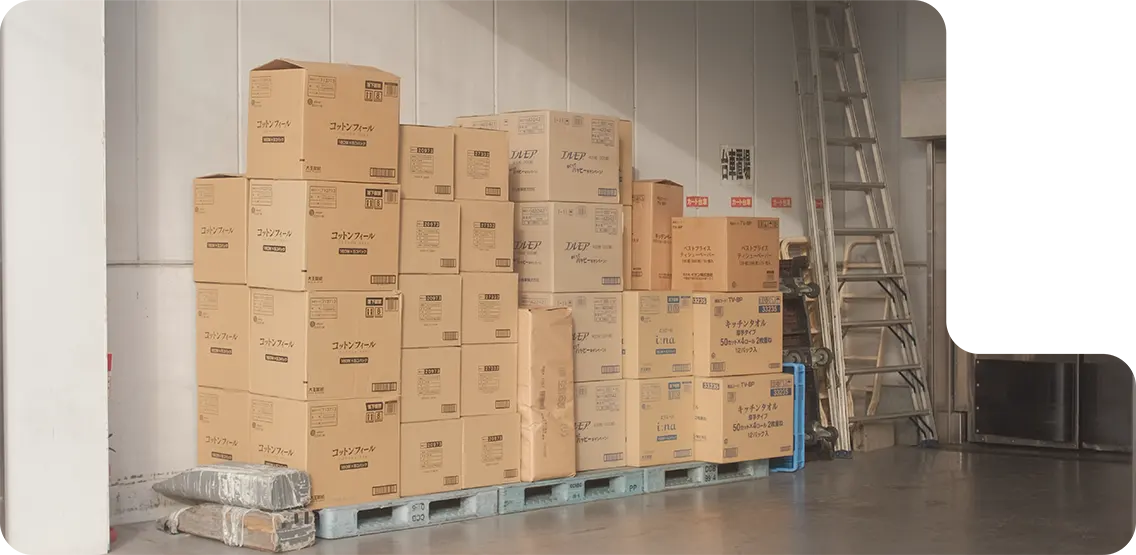Table of Contents
More Inventory Content
Get the latest e-commerce industry news, best practices, and product updates!
Table of Contents
More Inventory Content
Share This
Get the latest e-commerce industry news, best practices, and product updates!
Table of Contents
Share This
More Inventory Content
Get the latest e-commerce industry news, best practices, and product updates!
In the era of growing digital business and e-marketing, there are certain aspects retailers must always keep in mind. One is the proper implementation of inventory management in the supply chain for any business to prosper.
Now, when we talk about inventory or inventory management, there are multiple layers we must understand.
Inventory can also be referred to as goods that are currently in various stages of production, preparing for sale:
- Finished goods that are ready to be sold to customers
- Work-in-progress goods that are currently in the process of being made
- Raw materials that will be used in the production of finished goods

13 Types of Inventory (With Examples)
The types of inventory can vary from business to business, depending on the nature of the company. However, these top 13 types of merchandise are common for all kinds of companies.
Raw materials
Raw materials are the goods a business uses to produce or manufacture finished goods. Furthermore, raw materials are goods that are mostly not recognizable from their original form when the finished products are ready. For example, the oil used to create shampoo.
Components
These are almost similar to raw materials. However, components used to create and finish products remain recognizable in their original form in the finished product. For example, screws.
Work-in-progress (WIP)
As the name suggests, work-in-progress (WIP) is currently in the stages of producing finished products. Work-in-progress products include raw materials, components, overhead, labor, and packing materials.
Finished goods
Finished goods are goods ready to be sold to customers for a price.
MRO
Maintenance, repair, and operations (MRO) are often available in the form of supplies. MRO supports the production of finished goods or even the maintenance of your business.
Packing and packaging materials
Packing and packaging materials are available in three types. Primary packing materials protect your products and increase their durability during transit. At the same time, the secondary packing material is used for finished goods and includes labels and SKU information. Lastly, tertiary packing materials are used when products are to be transported in bulk.
Safety stock & anticipation stock
Safety stock is additional or buffer inventory a business procures beforehand and stores to meet unexpected spikes in demand. Moreover, the safety stock has a cost of ownership, and it helps companies to maintain customer satisfaction by completing order fulfillment on time. Similarly, the anticipation stock includes finished goods and raw materials a business purchases to prepare for the changing trends in sales and production. Your business can purchase safety stock if you witness a rise in the prices of raw materials or when the peak sales season of your products approaches.
Decoupling inventory
The term decoupling inventory is used to refer to WIP or extra items that businesses keep at the station of each production line to prevent hindrances in work. While all firms are required to have safety stock, they use decoupling inventory when certain parts of the line work at varying speeds. Furthermore, decoupling inventory only applies to businesses in the manufacturing line.
Cycle inventory
The cycle inventory is ordered by businesses to get the right amount of stock for the most affordable prices. Some of the merchandise might deplete as more orders are shipped.
Service inventory
Service inventory is used to refer to a management accounting concept. Service inventory defines how much service a business can offer during a given period. For example, a hotel with 100 rooms accommodating 100 guests has a service inventory of 100 rooms.
Transit inventory
It’s also known as transit inventory. Transit stock is inventory that keeps moving between manufacturers, distribution centers, and warehouses. Transit inventory can even take up to weeks to move between two facilities.
Theoretical inventory
It’s also referred to as book inventory and is the least amount of stock a business needs to complete any process without waiting. Furthermore, companies mostly use theoretical inventory in the food industry and production. Businesses can measure theoretical inventory by using the actual vs. theoretical formula.
Excess inventory
It’s also known as obsolete inventory. Excess inventory includes unsold or unused raw materials or goods a business does not expect to use or sell but is still required to pay for storage.

What is Inventory Analysis?
Inventory analysis involves studying how your products’ demands change over time. Furthermore, inventory analysis enables businesses to predict how much their customers will demand a particular product in the future and stock the optimum amount of inventory.
ABC analysis is one of the most essential and well-known methods for evaluating inventory. You have to club goods into the following three categories for performing inventory analysis:
A inventory
It includes your best-selling products that require the least storage space and cost. Furthermore, experts believe A inventory represents almost 20% of your total inventory.
B inventory
Though B inventory moves at the same rate as A inventory, it incurs more storage costs. Moreover, B inventory represents almost 40% of your total inventory.
C inventory
The remainder of your inventory costs the most in terms of storage and brings in the lowest returns and profits. Moreover, C inventory also represents 40% of your total inventory. Inventory analysis can influence your choice of methods for inventory control, whether you opt for just-in-time (JIT) or just-in-case inventory control methods.

What Are the Benefits of Inventory Analysis?
- It increases profits by lowering costs and supporting your turnover
- It helps your business identify and reorder products sold most frequently
- Inventory analysis prevents you from spending money on products that don’t sell or move slowly
- You can make better inventory forecasts and prevent stockouts
- Inventory analysis increases customer satisfaction
- It helps you expand your knowledge and understanding of your business
- Lastly, inventory analysis helps you gain a stronger position to negotiate prices with your suppliers

What Can Inventory Tell You About Your Business?
It wouldn’t be overstating that customer expectations have changed, seemingly overnight, due to the pandemic. The change in customer expectations is not just a trend but a reality that businesses must accept or risk becoming irrelevant. Furthermore, changing customer expectations have impacted the core of e-commerce firms and the supply chain network.
You risk losing your customers if you don’t have a real-time inventory record. Furthermore, customers want to buy from e-commerce brands that navigate multiple store locations and offer the most accurate information on which products are available nearby and which aren’t.
Businesses can’t address uncertainties in inbound supply if they want to meet customer demand in the future unless they have tools and software that connect inventory data and analyze how external factors affect it.
In today’s digital world, inventory reveals that businesses with enough stock on hand are the ones who complete customer orders on time. Furthermore, brands that satisfy their customers shall eventually emerge as the industry leader.

Inventory Adjustment
Inventory adjustments are increases or decreases in inventory that a business makes to account for inventory losses due to theft, damage, breakage, and errors in the number or amount of stock received. Furthermore, inventory adjustments are made by businesses to match the current level of inventory to match a product’s actual on-hand quantity.
There are two types of inventory adjustments that a business can make to its inventory levels:
Stock on hand
The quantity of stock you currently have on hand, or salable stock, is either increased or decreased. You can adjust the value and quantity of inventory on hand in the stock ledger.
Unavailable inventory
The quantity of stock you currently have on hand does not change. However, the quantity of unavailable or non-salable stock is either increased or decreased. You can record the adjustment as a transfer between the stock currently on hand and the unavailable stock. You don’t have to make adjustments to the stock value.

Location of Inventory
Here are top tips to help you effectively look after your inventory:
Categorize your inventory
You can segment your inventory to understand which products you need to order in more quantity and more frequently. Furthermore, you can identify which products are more critical in best-selling and slow-moving products. Experts suggest you categorize your inventory into items you need less of to most of.
Track all your products’ information
You should keep a record of all product information, including suppliers, barcode data, SKU, lot numbers, countries of origin, etc. Furthermore, you can also keep track of the cost of each product. It can help you identify factors impacting the cost, including seasonal fluctuations, scarcity, etc.
Audit your inventory
You should make it a point to count your inventory physically and regularly to ensure it matches the number you have predicted. You can perform an inventory audit weekly, monthly, quarterly, yearly, or even keep a daily record. Regardless of the frequency of inventory audits, you should ensure audits are conducted regularly and whether the figure matches your system.
Analyze your supplier’s performance
Analyze your supplier performance and discuss issues you might be facing in the stock supply with them. You face severe consequences due to unreliable suppliers. You can discuss any problems you might be facing with your suppliers.
Follow the 80/20 inventory rule
You should stick to the 80/20 inventory rule, meaning 80% of your profits should be generated from 20% of your stock. You should prioritize the inventory management of 20% of your profit-generating stock and understand its life cycle. Moreover, you should analyze how many you sell in a given period.
Maintain consistency in receiving stock
You should maintain consistency in how and when you order and receive stock. More importantly, you should make sure you have a standard procedure in place for receiving inventory. Even minor discrepancies in the process can have a significant impact.
Keep track of your sales
Tracking your sales goes without saying. If you don’t monitor how many sales your business makes, you wouldn’t know your inventory levels and when to reorder to stock up products before completely running out of stock.
Invest in an inventory management system
You should invest in an automated inventory management system or technology that integrates seamlessly with other systems. An effective management system can help your business track, manage, and control your inventory.
Sign up today and leave the logistics to us
Sign up and we will get back to you within 24 hours to discuss what services would be best for your business needs. Or speak with us now and tell us what you need.
FAQs
Inventory tracking delivers the following benefits to business:
- Better stock visibility
- Avoiding shortages
- Improved inventory forecasting
- Multiple location tracking
- Faster detection of errors
These are the four primary types of inventory:
- Raw materials
- Work-in-progress (WIP)
- Final goods
- MRO
Production inventory is the number of goods your company currently has on hand for the production of final goods. Moreover, production inventory includes all supplies and parts of the manufacturing process.
Material management incorporates the following four functions:
- Demand estimation and procurement
- Receipt and inspection
- Storage
- Issue and use
- Updated inventory levels
- Multiple stock locations
- Accuracy of inventory levels
- Carrying costs
- Inventory valuation
- Reorder levels
- Inventory turnover ratio
- ABC analysis
- VED analysis
- HML analysis
- SEO analysis
- Safety stock analysis
- Gross margin return on invested inventory (GMROI)
- Inventory turnover rate
- Carrying costs
- Average days to sell inventory
- Stockout rate
- Customer service level (CSL)
- Available to promise (ATP)
- Audit your inventory levels
- Align your stock analysis with your business strategy goals
- Use an automated inventory management system